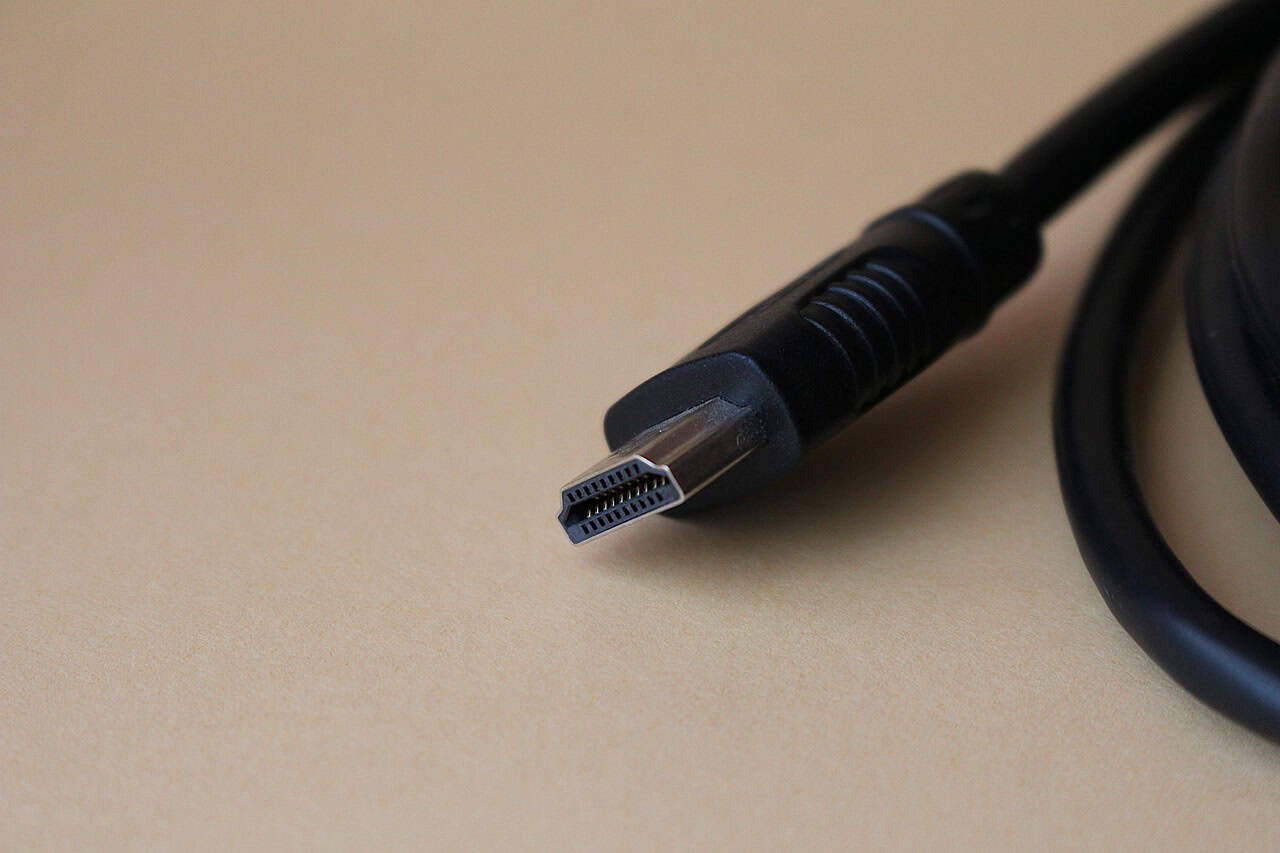The next generation of HDMI technology is on the horizon. HDMI 2.2 will make its debut at CES 2025 in Las Vegas this January. This new standard promises to push the boundaries of display technology and revolutionize consumer electronics.
HDMI 2.2 is expected to offer increased bandwidth beyond the current 48 Gbps limit, enabling support for higher resolutions and refresh rates. This advancement will benefit gamers, content creators, and tech enthusiasts alike. The HDMI Forum plans to unveil the specifications on January 6th, just before the official CES 2025 opening event.
The new HDMI standard may coincide with the launch of next-generation graphics cards from major manufacturers. This timing suggests a coordinated effort to push display technology forward across multiple fronts.
HDMI 2.2: The Future of Display Connectivity
What is HDMI 2.2?
HDMI 2.2 is the next generation of the High-Definition Multimedia Interface. It will bring improvements in bandwidth, resolution, and other features. This will allow for even better video and audio experiences.
Expected Features and Improvements
While the official specifications are not fully released yet, some expected features and improvements include:
- Increased Bandwidth: HDMI 2.2 is expected to offer higher bandwidth than HDMI 2.1a. This will allow for higher resolutions and refresh rates.
- Support for Higher Resolutions and Refresh Rates: Expect support for resolutions beyond 8K, potentially up to 10K, and higher refresh rates for smoother motion.
- Improved HDR Support: Enhancements to High Dynamic Range (HDR) technology will provide better contrast, color accuracy, and detail.
- New Features for Gaming: Features like Variable Refresh Rate (VRR) and Auto Low Latency Mode (ALLM) will likely see further improvements.
How Does It Compare to HDMI 2.1a?
HDMI 2.1a is the current standard. HDMI 2.2 will offer improvements in several areas. The main difference will be increased bandwidth. This will allow for higher resolutions and refresh rates.
What This Means for Consumers
HDMI 2.2 will bring better picture and sound quality. It will also support new display technologies. Consumers will need new devices with HDMI 2.2 ports to take full advantage of these features.
When Will It Be Available?
HDMI 2.2 is expected to be unveiled at CES 2025. Devices with HDMI 2.2 ports will likely become available later in 2025 or in 2026.
The Importance of Bandwidth
Bandwidth is important for sending large amounts of data. Higher bandwidth allows for higher resolutions, refresh rates, and better image quality. HDMI 2.2’s increased bandwidth is a key improvement.
Backward Compatibility
HDMI is usually backward compatible. This means you can use older HDMI cables with newer devices. However, to get the full benefits of HDMI 2.2, you will need new HDMI 2.2 cables.
The Future of Display Technology
HDMI 2.2 is part of the ongoing development of display technology. New technologies like Mini-LED and MicroLED displays will benefit from the increased bandwidth and features of HDMI 2.2.
Key Takeaways
- HDMI 2.2 will debut at CES 2025 with increased bandwidth capabilities
- The new standard will support higher resolutions and refresh rates
- HDMI 2.2 may launch alongside next-generation graphics cards
Advancements in HDMI 2.2 Technology
The upcoming Consumer Electronics Show (CES) in 2025 is anticipated to be the stage for the unveiling of HDMI 2.2, the next iteration of the ubiquitous display interface. This new standard promises to push the boundaries of visual fidelity and performance, bringing increased bandwidth to support higher resolutions, faster refresh rates, and enhanced HDR capabilities.
While specific details are still under wraps, the expected improvements point towards a significant leap forward in display technology, impacting everything from televisions and monitors to gaming consoles and streaming devices. This development continues the trend of progressively better home theater and gaming experiences for consumers.
HDMI 2.2 brings significant improvements to display technology. The new standard offers higher bandwidth, enhanced resolution support, and faster refresh rates compared to its predecessors.
Comparison with HDMI 2.1 and 2.1b
HDMI 2.2 builds upon the foundations of HDMI 2.1 and 2.1b. The current HDMI 2.1b standard supports a gross transfer rate of 48 Gbps. HDMI 2.2 is expected to increase this bandwidth significantly.
Experts anticipate HDMI 2.2 will offer bandwidth of up to 80 Gbps. This substantial increase allows for improved performance in various areas.
Key differences:
- Bandwidth: HDMI 2.1b (48 Gbps) vs HDMI 2.2 (up to 80 Gbps)
- Resolution support: Higher resolutions possible with HDMI 2.2
- Refresh rates: Faster refresh rates achievable with increased bandwidth
Higher Performance Standards
HDMI 2.2 enables support for more demanding display requirements. The increased bandwidth allows for uncompressed support of higher resolutions, such as 8K at 120 Hz and potentially 10K at higher frame rates.
Enhanced features:
- 8K resolution at 120 Hz without compression
- Potential support for 10K resolution
- Improved color depth and HDR capabilities
These advancements cater to the growing demand for ultra-high-definition displays in gaming, professional applications, and home entertainment systems.
Compatibility and Integration
HDMI 2.2 is designed to work seamlessly with existing and future devices. The new standard is expected to maintain backward compatibility with older HDMI versions, ensuring a smooth transition for consumers and manufacturers.
Integration considerations:
- New HDMI cables may be required to fully utilize HDMI 2.2 capabilities
- Graphics card manufacturers like AMD and Nvidia might introduce support for HDMI 2.2 in their upcoming product lines
- Display manufacturers will likely adopt HDMI 2.2 in future high-end monitors and TVs
The official announcement of HDMI 2.2 specifications at CES 2025 will provide more detailed information on compatibility and integration aspects.
Impact on Industries and Content Creation
The introduction of HDMI 2.2 will bring significant changes to various sectors. These advancements will affect media production, consumer electronics, and industry regulations.
Media Production Evolution
HDMI 2.2 will transform how content is created and delivered. Film and television studios will need to adapt their workflows to support higher resolutions and refresh rates. This change may require upgrades to cameras, editing software, and post-production equipment.
Game studios will benefit from enhanced bandwidth capabilities, allowing for more detailed and immersive gaming experiences. The new standard could enable real-time ray tracing and complex physics simulations at higher frame rates.
Content producers may need to re-evaluate their distribution strategies. Streaming platforms might update their infrastructure to take advantage of HDMI 2.2’s improved capabilities.
Consumer Electronics Advancement
Television manufacturers will likely introduce new models supporting HDMI 2.2. These TVs may offer:
- Higher resolutions (8K and beyond)
- Increased refresh rates
- Enhanced color depth
Next-generation HDMI technology could lead to the development of new HDMI cables. These cables would need to handle the increased bandwidth requirements of HDMI 2.2.
Graphics card manufacturers, including those producing Blackwell GPUs, may release updated models to fully utilize HDMI 2.2’s features. This could drive a new wave of upgrades for PC enthusiasts and professionals.
HDMI Licensing and Regulation
The HDMI Licensing Administrator (HDMI LA) will play a crucial role in the rollout of HDMI 2.2. They will need to:
- Develop new compliance testing procedures
- Update licensing agreements for manufacturers
- Ensure backwards compatibility with older HDMI standards
Regulatory bodies may need to revise their standards for electronic devices. This could include updating energy efficiency requirements for displays and other HDMI 2.2-compatible devices.
The transition to HDMI 2.2 may also prompt discussions about digital rights management (DRM) and content protection in high-bandwidth scenarios.







